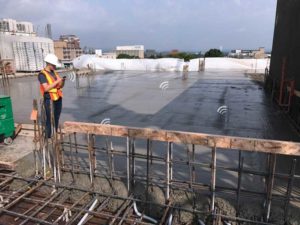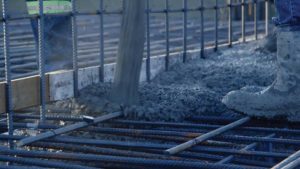Wireless sensors in construction

Smart cities and the Internet of Things
The development of smart cities and growth of the Internet of Things (IoT) encourages the use of advanced technologies in design and construction processes as well as in the wireless sensor networks (WSN) embedded within smart cities. The IoT is a system of connected computers, sensors, devices, or objects with the ability to transfer data over a network without human interference. The introduction of IoT and safety systems is one of the first steps to building smart infrastructure and cities. The IoT is becoming even more important as construction professionals continue to improve day-to-day processes. IoT technologies embedded directly within the concrete will enable smart cities to provide safe, efficient, and interactive infrastructure. The networks within smart cities, which include Seoul in South Korea, Vienna in Austria, and Boston, are developed to maximize the economy, environment, society, and welfare, as well as increase sustainable behaviour among users, companies, and administration.
Benefits of sensor technology
As mentioned earlier, concrete sensors used during the early placement and curing stages of concrete can greatly optimize the building process. They allow stakeholders to monitor project progress and quality every step of the way, and to make any adjustments necessary, ensuring the project is completed with the highest possible level of quality. In one case, wireless concrete sensors helped save time and resources during the construction of a five-floor residential building in downtown Ottawa.
For ready mix producers, smart concrete sensors not only allow them to differentiate themselves within the market through technological innovation, but also through the quality of their product, and the level of service they offer. By adopting leading technology, producers are able to bring more value to the table than their competitors, and generate new, high-margin revenue. They are able to precalibrate their mixes and provide information to customers using smartphone applications. Additionally, they are able to access field data allowing them to see exactly how the mixes perform in different conditions and optimize their performance and durability for future projects. The use of smart concrete sensors by ready mix producers allows the contractors they work with to learn how a mix performs, which in turn, enables them to make better and quicker decisions.

For contractors adopting smart sensors in their everyday procedures, the return on investment (ROI) is immediate. Contractors and engineers know the value of time when it comes to projects that can take weeks, months, or years
to complete. For example, having access to real-time temperature and strength data means contractors know the perfect time to remove formwork. Waiting too long to remove formwork can result in the concrete sticking to the forms, making them difficult, sometimes impossible, to remove without causing significant damage. If formwork is removed before the concrete has reached optimal strength, the concrete cracks and collapses.
When it comes to project owners, the most evident benefit to using concrete temperature and maturity sensors is the ability to make sound decisions based on accurate data. With the use of RH sensors, project owners can avoid problems related to inadequate testing and premature placement of flooring materials. Premature flooring installation can result in delamination; re-emulsification of the flooring adhesive; and curling, cracking, or blistering of the epoxy coating. Depending on the severity and surface area of these flooring failures, owners can pay upwards of thousands of dollars in repairs for a few square feet of damage.


